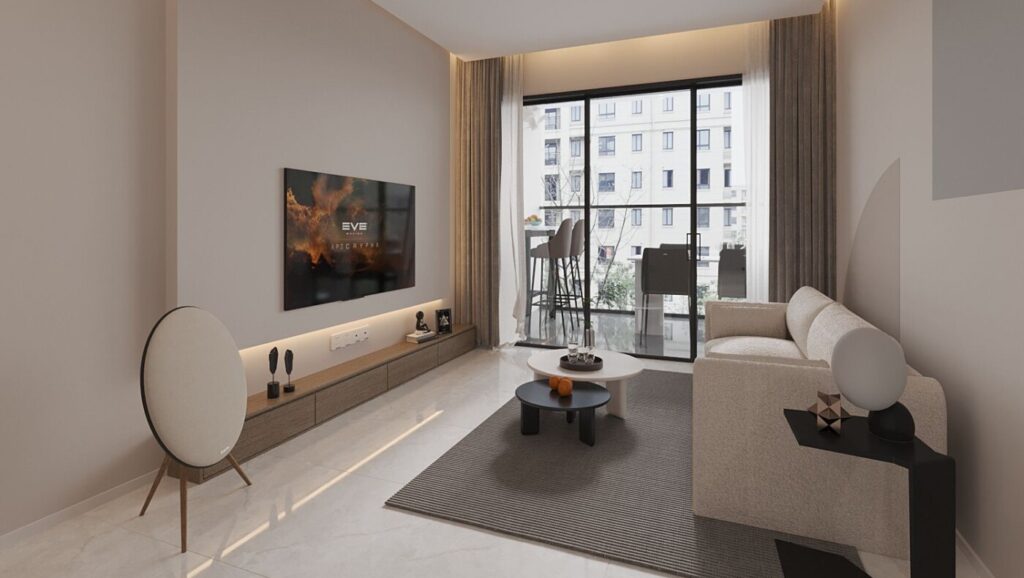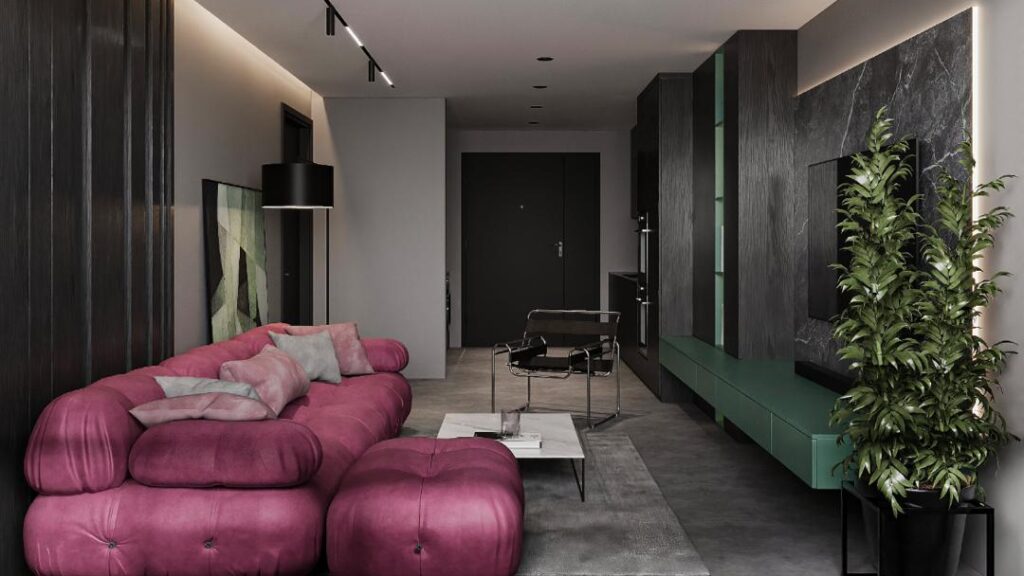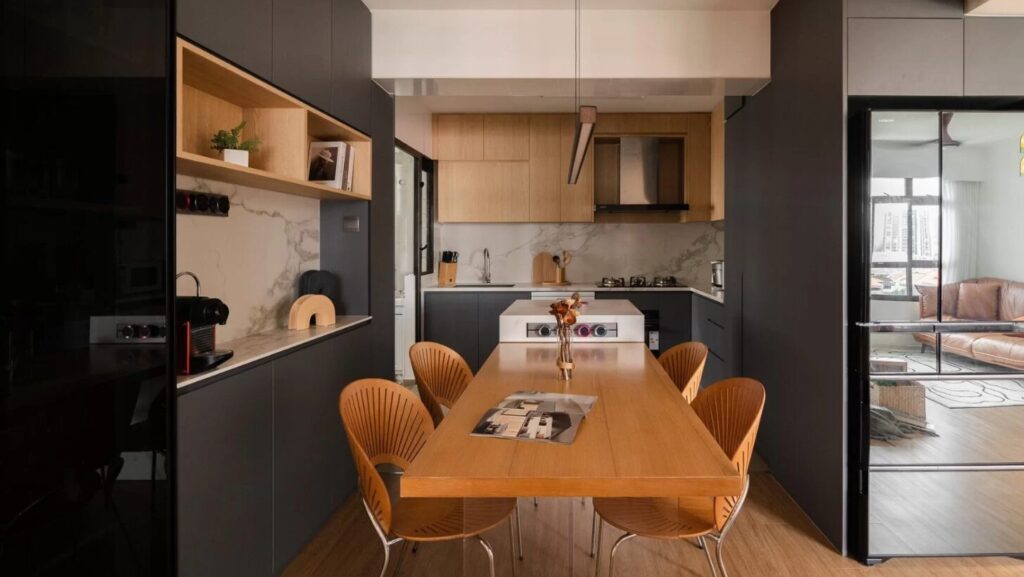Discover 6 Unique Secrets for a Calm Home
| Topics | Details |
| Embrace Minimalism | Focus on intentional living by reducing clutter, using clever storage solutions, and keeping only possessions that offer value or joy. |
| Use Nature-Inspired Elements | Bring the outdoors inside with houseplants, natural textures such as wood and stone, and earthy colour tones to create a grounded atmosphere. |
| Master Soft Lighting | Use layered lighting (ambient, task, and accent) and choose warm-toned bulbs to enhance mood and encourage relaxation. |
| Incorporate Calming Scents | Introduce essential oils, candles, or potpourri with soothing aromas like lavender, chamomile, or sandalwood to help relieve stress. |
| Use Colour Psychology | Apply soft, tranquil colours such as blue, green, and warm neutrals to promote emotional balance and visual calm throughout your living space. |
| Create Purposeful Zones | Design specific areas for activities such as reading, meditating, or resting using rugs, lighting variation, or furniture placement to aid focus. |
Your home should be more than just a place to rest it ought to be a sanctuary of peace, comfort, and rejuvenation. In today’s hectic and hyperconnected world, we often find ourselves overwhelmed by the stresses, noise, and demands of daily life. That’s why the environment we return to each day plays a vital role in restoring our emotional balance and mental well-being. When your home radiates calm, it becomes a haven where you can truly relax, reflect, and reconnect with yourself.
The design and atmosphere of our living spaces can either uplift or exhaust us. A chaotic or cluttered environment can contribute to anxiety, irritability, and disturbed sleep. On the contrary, a calm and thoughtfully curated home promotes clarity, focus, and a sense of peace. It doesn’t merely look aesthetically pleasing it feels good, offering the emotional support needed to thrive in every aspect of life.
Creating such a harmonious setting doesn’t necessitate a complete renovation or a lavish budget. In fact, meaningful change often comes from simple, considered choices and mindful adjustments. Whether you live in a compact flat or a spacious house, the principles of calming design are universal and deeply transformative.
So, if you’ve ever longed for a home that truly nurtures your soul, you’re in the right place. Let’s explore 6 lesser-known but powerful secrets that go beyond surface-level decor and delve into the essence of what makes a home feel serene, restorative, and aligned with your inner calm.
Secret #1: Embrace Minimalism
Minimalism is more than just a design aesthetic—it’s a lifestyle rooted in purpose and clarity. In a world where we are constantly inundated with both physical and mental clutter, adopting a minimalist approach allows us to cut through the noise. It encourages intentional living by helping you evaluate what you own and why, creating both physical and mental space.
By removing items that serve no real function or spark no joy, you create room for what truly matters. Simplifying your surroundings can reduce stress significantly, as fewer possessions mean less to clean, manage, or worry about. It’s an immediate upgrade for your emotional well-being. Think of the calm you feel in a pristine hotel suite—minimalism recreates that every single day.
Storage plays an essential role in maintaining this lifestyle. Rather than cramming belongings into every available corner, consider investing in clever storage solutions such as under-bed drawers, floating shelves, and multi-functional furniture. These elements help preserve an open, airy feel while ensuring everything has its place.
Minimalism is particularly beneficial in urban homes where space is at a premium. For practical tips on implementing minimalism in a small home, have a look at this guide on minimalist interior design in Singapore.
Secret #2: Use Nature-Inspired Elements
Our brains are innately wired to feel better when we’re close to nature. This is why introducing natural elements into your home—such as plants, wooden textures, stone finishes, or gentle water features—can instantly evoke a sense of calm and balance. It’s a beautiful way to reconnect with the outdoors, even amidst a bustling city.
Indoor plants are perhaps the easiest and most effective natural elements to incorporate. Not only do they purify the air, but they also infuse your home with life and vitality. Low-maintenance options like peace lilies, spider plants, and pothos are perfect for even the busiest households, providing immense visual and psychological benefits.
Beyond greenery, incorporating organic textures and materials brings a grounding effect to your interiors. Think wood, rattan, jute, linen, or unpolished stone—all of which add tactile warmth. These materials complement various design styles, from Scandinavian to boho-chic, and contribute to a cohesive, nurturing space.
To see these principles in action, explore these stunning wood-themed homes that integrate nature seamlessly into their interiors.
Secret #3: Master the Art of Soft Lighting
Lighting is often overlooked in interior design, yet it holds immense power to shape the atmosphere of a space. Harsh, direct lighting can be jarring and uncomfortable, whereas soft, layered lighting creates a warm and calming environment. It’s not just about how well a room is lit—it’s about how the lighting makes you feel.
Layering is key. Start with ambient lighting for general brightness, then add task lighting such as reading lamps or pendant lights over worktops. Finish with accent lighting—perhaps wall sconces or fairy lights—to enhance visual interest and mood. This flexibility lets you adjust the feel of your space throughout the day.
Equally important is choosing the right colour temperature for your bulbs. Opt for warm white tones (typically 2700K–3000K), which replicate the natural glow of sunlight or candlelight and help relax the mind. Cool white or bluish lights, while useful in offices, can be harsh in relaxation areas like the living room or bedroom.
For more affordable ways to refine your lighting, explore this helpful article on achieving luxe lighting on a budget.
Secret #4: Incorporate Calming Scents
Scent has a profound impact on our emotions and memory. A particular aroma can transport us to a cherished moment or shift our mood within seconds. This is why incorporating calming scents into your home can greatly enhance the overall ambience and support your emotional well-being.
Aromatherapy tools such as essential oil diffusers, incense sticks, or natural wax candles offer a range of soothing aromas. Lavender, chamomile, bergamot, and sandalwood are especially known for their calming properties. Use different scents in various rooms—lavender in the bedroom for better sleep, eucalyptus in the bathroom for a spa-like feel, and citrus in the kitchen for an energising uplift.
To enhance this effect, pair scents with complementary textures and lighting. Imagine soft bedding, low lighting, and the gentle aroma of lavender—it’s a multi-sensory experience that brings tranquillity at every level. These layers work together to create an environment that feels safe and restorative.
If you’re keen on combining fragrance and greenery, check out these top indoor plants that purify and beautify your homefor a dual-purpose solution.
Secret #5: Use Colour Psychology to Your Advantage
Colour influences how we feel, often without us even realising it. Certain shades can make a space feel expansive, intimate, or uplifting, while others promote stillness and serenity. When designing a calm home, colour selection becomes a vital tool to subtly shift the atmosphere in each room.
Soothing hues such as soft blues, muted greens, and warm neutrals like beige or taupe are known to create a peaceful backdrop. These tones reduce overstimulation and encourage the mind to slow down. They’re particularly effective in bedrooms, reading areas, or anywhere you want to feel settled and content.
Consider the function of each room when choosing colours. While your bedroom might benefit from cooler, sleep-friendly tones, your lounge or kitchen could be enhanced by gentle creams and pastels. Try to keep bolder hues reserved for accent pieces, so they don’t overwhelm the calm you’re cultivating.
Need some ideas for applying colour effectively? These affordable HDB interior design ideas offer excellent examples of peaceful yet stylish palettes.
Secret #6: Create Purposeful Zones in the Home
Creating zones within your home isn’t just about layout—it’s about lifestyle. Each part of your home should serve a purpose, whether that’s reading, relaxing, meditating, or enjoying meals. By clearly defining these spaces, you help your brain shift gears between activities more effortlessly.
You don’t need walls to create these zones—simple design tricks can work wonders. Use rugs to anchor spaces, vary your lighting styles, and rearrange furniture to establish boundaries. Even a comfy chair in a quiet corner can become a retreat when paired with a lamp and small shelf.
This method is particularly helpful in open-plan homes or studio flats. It keeps things from feeling like one large, unfocused area. A strategically placed bookcase or room divider can subtly separate a work zone from a rest zone, helping you mentally compartmentalise and find calm.
Looking for real-life inspiration? Discover how Singaporean book lovers created cosy reading corners tailored to their lifestyles and personalities.
FAQ
1. What’s the most budget-friendly way to make my home feel calm?
One of the simplest yet most effective ways to create a calming home environment is by decluttering. Removing unnecessary items and organising your space can dramatically reduce visual stress and mental overwhelm. Add soft, ambient lighting, a few indoor plants, and gentle scents like lavender to complete the transformation—without spending a fortune.
2. How can I use lighting to change the mood of a room?
Lighting does more than just illuminate a room—it sets the tone. Use layered lighting: ambient lighting for general brightness, task lighting for activities like reading or cooking, and accent lighting for atmosphere. Opt for warm white bulbs (2700K–3000K) to create a cosy and relaxing feel, especially in bedrooms and living areas.
3. What are the best colours for a peaceful bedroom?
Muted, earthy tones work best to promote rest and relaxation. Consider shades like dusty blue, sage green, warm grey, or creamy off-white. These hues are gentle on the eyes and help calm the mind, making it easier to unwind and fall asleep. Avoid overly bright or vivid colours in sleep spaces.
4. Are there specific scents that help reduce stress?
Absolutely. Aromas such as lavender, bergamot, chamomile, and sandalwood are known to help reduce anxiety and promote a sense of calm. Use essential oil diffusers, scented candles, or room sprays to introduce these fragrances into your space. They’re especially effective in bedrooms, bathrooms, and reading nooks.
5. How do I create “zones” in a small flat or studio?
Even in a smaller home, it’s possible to define distinct zones with clever design. Use different rugs, lighting levels, paint colours, or furniture arrangements to separate areas for work, rest, or leisure. For example, a corner with a comfortable chair, lamp, and small table can serve as a cosy reading nook without needing walls or renovations.
6. What’s one overlooked detail that makes a home feel more serene?
Sound is often overlooked, but it significantly influences how calm a space feels. Soft background music, ambient nature sounds, or even silence can help create a more peaceful atmosphere. Use sound-absorbing furnishings like thick curtains, plush rugs, and upholstered furniture to reduce echo and outside noise.
Are you looking to upgrade your space? Look no further! Drop us an enquiry at media@redbrick.sg and let us help you transform your home into a smart and efficient living space. Our experts are here to assist you in finding the perfect smart home devices to suit your needs and enhance your lifestyle.
Designing your dream home can be an exciting journey, but it can also be overwhelming. With so many options and styles available, it can be challenging to decide what is best for you and your family. However, by considering factors such as functionality, color palette, furniture, materials, and personal style, you can create a space that is not only beautiful but also practical and comfortable.
When it comes to achieving a successful interior design project, choosing a provider with a rock-solid reputation and exceptional skills is paramount. At Redbrick Homes, we understand that inspiration is key. That’s why our top-quality interior design partners are ready to wow you with beautiful, personalized spaces brimming with exceptional Singaporean ideas.
Remember to take your time, do your research, and work with a professional if needed. With the right interior design choices, you can transform your house into a dream home that you’ll enjoy for years to come.










